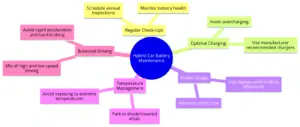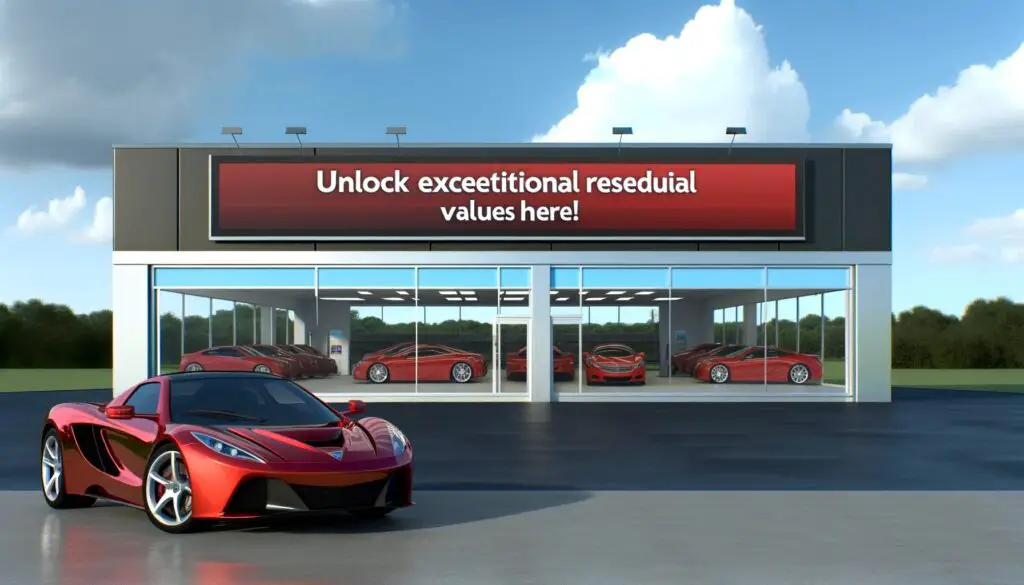Hybrid cars have revolutionized the automotive industry, offering a blend of fuel efficiency and eco-friendliness. Central to their performance is the battery system, which powers the electric motor alongside the internal combustion engine. In this guide, we delve into the intricacies of hybrid car batteries and provide indispensable strategies for maximizing their lifespan and efficiency.
Understanding Hybrid Car Batteries
Hybrid vehicles employ various types of batteries, including nickel-metal hydride (NiMH) and lithium-ion (Li-ion). These batteries work in tandem with the internal combustion engine and regenerative braking system to store and discharge energy efficiently.
Factors Affecting Hybrid Battery Life
Temperature Extremes and Hybrid Battery Life
Impact of High Temperatures:
- Accelerated Chemical Reactions:
- High temperatures accelerate chemical reactions within the battery cells, leading to increased degradation.
- This degradation results in reduced battery capacity and overall performance.
- Overheating Risk:
- Excessive heat can cause the battery to overheat, posing a risk of thermal runaway and potential damage to the battery pack.
- Continuous exposure to high temperatures can shorten the lifespan of the battery significantly.
Impact of Cold Temperatures:
- Reduced Efficiency:
- Cold temperatures impede the battery’s ability to function optimally, leading to reduced energy output and diminished range.
- The chemical reactions necessary for battery operation slow down in colder temperatures, affecting overall performance.
- Cold-Weather Challenges:
- In extremely cold conditions, the battery may experience increased internal resistance, further limiting its capacity and output.
- Cold weather can also affect the efficiency of the regenerative braking system, reducing the amount of energy recovered during deceleration.
Mitigation Strategies:
- Temperature Regulation:
- Park the hybrid car in shaded areas or garages during hot weather to prevent overheating.
- Utilize climate control features to maintain a moderate internal temperature, ensuring optimal battery performance.
- Consider installing battery thermal management systems to regulate temperature and enhance longevity.
- Preheating in Cold Climates:
- Preheat the vehicle before use in colder climates to bring the battery to its optimal operating temperature.
- This helps improve battery performance and efficiency, particularly during cold starts.
Driving Habits and Hybrid Battery Life
Impact of Aggressive Driving:
- Increased Stress on Battery:
- Aggressive driving behaviors such as rapid acceleration and frequent braking place significant stress on the battery.
- This stress accelerates wear and tear on the battery cells, leading to premature degradation.
- Higher Energy Consumption:
- Aggressive driving consumes more energy from the battery, reducing overall efficiency and range.
- Sustained high-speed driving also contributes to increased energy consumption and heat generation within the battery pack.
Benefits of Smooth Driving:
- Extended Battery Lifespan:
- Adopting smooth and steady driving habits minimizes strain on the battery, prolonging its lifespan.
- Gradual acceleration, gentle braking, and maintaining a consistent speed help optimize battery performance.
- Efficient Energy Management:
- Smooth driving allows for more efficient energy management, reducing the need for frequent battery charging.
- Utilizing regenerative braking systems effectively captures and stores energy during deceleration, further enhancing battery efficiency.
Driving Tips for Battery Longevity:
- Avoid Rapid Acceleration and Braking:
- Gradually accelerate and decelerate to reduce stress on the battery and optimize energy regeneration.
- Maintain a Consistent Speed:
- Maintain a steady speed whenever possible to minimize fluctuations in energy consumption and maximize efficiency.
- Utilize Regenerative Braking:
- Take advantage of regenerative braking systems to capture and store energy during deceleration, extending battery range.
Charging Practices and Hybrid Battery Life
Risks of Improper Charging:
- Overcharging:
- Overcharging occurs when the battery remains connected to the charger after reaching full capacity, leading to overheating and damage.
- Continuous overcharging can accelerate battery degradation and reduce lifespan.
- Deep Discharges:
- Allowing the battery to discharge to extremely low levels can cause stress and damage to the battery cells.
- Deep discharges can lead to irreversible capacity loss and compromise overall battery health.
Best Charging Practices:
- Follow Manufacturer Recommendations:
- Adhere to the manufacturer’s charging guidelines and use the recommended charging equipment.
- Avoid using fast chargers excessively, as they can impose additional stress on the battery.
- Implement Regular Charging Schedule:
- Establish a regular charging schedule to maintain the battery at optimal levels without overcharging.
- Avoid prolonged periods of inactivity without charging, as this can lead to deep discharges and potential damage.
Charging Tips for Battery Health:
- Monitor Charging Progress:
- Keep track of the charging progress and disconnect the charger once the battery reaches full capacity.
- Avoid Extended Charging:
- Minimize the duration of charging sessions to prevent overheating and reduce the risk of overcharging.
- Utilize Smart Charging Features:
- Take advantage of smart charging features, if available, to optimize charging efficiency and battery health.
By understanding the impact of temperature extremes, driving habits, and charging practices on hybrid battery life, owners can take proactive measures to maximize battery longevity and ensure optimal performance throughout the vehicle’s lifespan
Preventive Maintenance Strategies for Hybrid Battery Performance
Regular maintenance checks are essential for maintaining optimal performance and longevity of hybrid car batteries. Adhering to the manufacturer’s recommended maintenance schedule and implementing preventive measures can help detect potential issues early and avoid costly repairs. Here are some preventive maintenance strategies to ensure the health of your hybrid battery:
Adhere to Manufacturer’s Maintenance Schedule:
- Scheduled Inspections:
- Follow the manufacturer’s recommended maintenance schedule for your hybrid vehicle.
- Schedule regular inspections of the cooling system, electrical components, and battery health checks as outlined in the owner’s manual.
- Routine Maintenance Tasks:
- Perform routine tasks such as fluid checks, filter replacements, and tire rotations according to the recommended intervals.
- Address any issues or abnormalities detected during routine inspections promptly to prevent further damage.
Cooling System Inspections:
- Check Coolant Levels:
- Monitor coolant levels regularly to ensure the cooling system operates effectively.
- Low coolant levels can lead to overheating, which can adversely affect battery performance and lifespan.
- Inspect Cooling System Components:
- Periodically inspect the radiator, hoses, and fans for signs of wear, leaks, or damage.
- Replace worn or damaged components to maintain efficient heat dissipation and prevent overheating of the battery.
Electrical Component Checks:
- Inspect Wiring and Connections:
- Examine the wiring harnesses and electrical connections associated with the hybrid battery system.
- Ensure connections are secure, and wiring is free from damage or corrosion that could affect electrical conductivity.
- Battery Health Checks:
- Use diagnostic tools to assess the health and condition of the hybrid battery.
- Monitor battery voltage, state of charge, and cell balance to detect any abnormalities indicative of potential issues.
Proactive Measures:
- Educate Yourself:
- Familiarize yourself with the specific maintenance requirements and recommended procedures for hybrid vehicles.
- Stay informed about common issues and warning signs related to hybrid battery health to address them proactively.
- Professional Inspection:
- Consider scheduling periodic professional inspections by certified technicians specializing in hybrid vehicle maintenance.
- Professional inspections can provide comprehensive assessments of the hybrid battery system and identify any underlying issues early on.
By implementing these preventive maintenance strategies and adhering to the manufacturer’s guidelines, hybrid car owners can ensure the optimal performance and longevity of their batteries. Regular maintenance checks, combined with proactive measures, are key to preventing potential issues and maximizing the lifespan of hybrid batteries.
Driving Habits for Maximizing Hybrid Battery Longevity
Adopting energy-efficient driving habits is paramount for extending the lifespan of your hybrid battery. By practicing mindful driving techniques, you can minimize strain on the battery and optimize energy regeneration during operation. Here are some key driving habits to consider for maximizing hybrid battery longevity:
Gentle Acceleration:
- Gradual Throttle Input:
- Apply gentle pressure to the accelerator pedal to achieve smooth acceleration.
- Avoid rapid or aggressive acceleration, as it can increase the load on the battery and decrease overall efficiency.
Coasting to a Stop:
- Anticipate Stops:
- Plan ahead and anticipate stops or slowdowns to minimize the need for heavy braking.
- Gradually reduce speed by coasting whenever possible, allowing the vehicle’s momentum to naturally slow down.
Maintaining a Consistent Speed:
- Steady Driving:
- Maintain a consistent speed while driving to reduce fluctuations in energy consumption.
- Avoid unnecessary speed changes or abrupt maneuvers, as they can disrupt energy flow and strain the battery.
Utilizing Regenerative Braking:
- Maximize Regenerative Braking:
- Take advantage of regenerative braking systems to capture and convert kinetic energy into electrical energy during deceleration.
- Gentle braking allows for more efficient energy regeneration and reduces reliance on the vehicle’s friction brakes.
Planning Efficient Routes:
- Optimize Driving Routes:
- Plan routes that minimize traffic congestion and stop-and-go driving conditions.
- Choose routes with smooth, uninterrupted traffic flow to maximize energy efficiency and reduce strain on the battery.
Monitoring Energy Consumption:
- Use Energy Consumption Displays:
- Utilize onboard energy consumption displays or dashboards to monitor real-time energy usage.
- Adjust driving behavior based on energy consumption feedback to optimize battery performance.
Conclusion:
By incorporating these energy-efficient driving habits into your daily routine, you can prolong the lifespan of your hybrid battery and maximize its efficiency. Gentle acceleration, coasting to a stop, maintaining a consistent speed, and utilizing regenerative braking are key strategies for minimizing strain on the battery and promoting energy regeneration. Additionally, planning efficient routes and monitoring energy consumption can further enhance battery longevity and overall vehicle performance.
Temperature Considerations for Hybrid Battery Longevity
Protecting the battery from extreme temperatures is essential for preserving its longevity and ensuring optimal performance. Extreme heat or cold can adversely affect battery health and efficiency. Here are some key considerations for managing temperature and maximizing hybrid battery lifespan:
Parking in Shaded Areas:
- Minimize Exposure to Direct Sunlight:
- Park your hybrid vehicle in shaded areas whenever possible to reduce exposure to direct sunlight.
- Shaded parking spots help mitigate the effects of heat buildup, preventing excessive temperature fluctuations that can degrade battery performance.
Climate Control Usage:
- Maintain Comfortable Interior Temperature:
- Use climate control features to regulate the interior temperature of the vehicle.
- Set the climate control system to a comfortable temperature range without overtaxing the battery.
Preconditioning:
- Preconditioning Before Use:
- Precondition the interior of the vehicle before driving in extreme temperatures.
- Use remote start or preheat/cool features to bring the cabin to a comfortable temperature while the vehicle is still plugged in.
Battery Thermal Management:
- Utilize Built-in Thermal Management Systems:
- Hybrid vehicles are equipped with built-in thermal management systems to regulate battery temperature.
- These systems help maintain the battery within its optimal temperature range, protecting it from extreme heat or cold.
Avoiding Extreme Conditions:
- Minimize Exposure to Extreme Temperatures:
- Avoid prolonged exposure to extreme heat or cold whenever possible.
- If parking for an extended period, choose shaded or covered parking areas to protect the battery from direct sunlight or harsh weather conditions.
Monitoring Battery Temperature:
- Monitor Battery Temperature:
- Use onboard diagnostics or monitoring systems to track battery temperature.
- Keep an eye on temperature readings to ensure the battery remains within its optimal operating range.
Conclusion:
By proactively managing temperature considerations, hybrid car owners can safeguard the longevity and performance of their batteries. Parking in shaded areas, utilizing climate control features, preconditioning the vehicle, and leveraging built-in thermal management systems are effective strategies for protecting the battery from extreme temperatures. By implementing these measures, hybrid car owners can maximize battery lifespan and ensure consistent performance over time.
Battery Health Monitoring for Hybrid Vehicles
Regular monitoring of the battery’s health is crucial for detecting and addressing potential issues early, ensuring optimal performance and longevity. By utilizing diagnostic tools and techniques, hybrid vehicle owners can interpret battery health data and take proactive measures to maintain its condition. Here are key steps for effective battery health monitoring:
Utilize Diagnostic Tools:
- Onboard Diagnostics:
- Hybrid vehicles are equipped with onboard diagnostic systems that provide real-time data on battery health.
- Utilize these systems to monitor key parameters such as voltage, state of charge, and cell balance.
Interpret Battery Health Data:
- Understanding Diagnostic Codes:
- Familiarize yourself with diagnostic codes related to battery health and performance.
- Interpretation of codes can provide valuable insights into potential issues such as cell degradation or imbalance.
Address Anomalies Promptly:
- Respond to Warning Signs:
- Pay attention to warning signs or alerts indicating potential battery issues, such as reduced performance or abnormal behavior.
- Address any anomalies promptly to prevent further degradation or damage to the battery.
Professional Battery Health Checks:
- Seek Professional Inspection:
- Schedule periodic professional battery health checks conducted by certified technicians.
- Professional inspections can provide comprehensive assessments of the battery’s overall condition and identify any underlying issues that may require attention.
Diagnostic Techniques:
- Perform Regular Tests:
- Conduct regular diagnostic tests to assess battery health and performance.
- Test parameters such as voltage, state of charge, and internal resistance to evaluate battery condition accurately.
Data Analysis:
- Analyze Diagnostic Data:
- Analyze diagnostic data collected over time to track trends and identify patterns.
- Look for any deviations from normal operating parameters that may indicate potential issues or degradation.
Conclusion:
Regular monitoring of battery health is essential for ensuring the continued performance and longevity of hybrid vehicle batteries. By utilizing diagnostic tools, interpreting battery health data, and seeking professional inspections when necessary, hybrid vehicle owners can effectively maintain the health of their batteries and address any issues before they escalate. Proactive battery health monitoring is key to maximizing performance and reliability, ultimately extending the lifespan of the hybrid vehicle’s battery.
DIY Maintenance Tips for Hybrid Battery Care
In addition to professional maintenance services, hybrid vehicle owners can implement several do-it-yourself (DIY) maintenance tips to care for their batteries. These simple yet effective practices can help ensure the longevity and optimal performance of the battery pack. Here are some DIY maintenance tips for hybrid battery care:
Keep Battery Terminals Clean:
- Regular Cleaning:
- Periodically inspect the battery terminals for dirt, corrosion, or buildup.
- Use a mixture of baking soda and water or a specialized battery terminal cleaner to clean the terminals thoroughly.
- Prevent Corrosion:
- Apply a thin coat of petroleum jelly or terminal protector spray to the cleaned terminals to prevent future corrosion.
- Ensure tight connections between the terminals and cables to maintain efficient electrical conductivity.
Inspect for Leaks or Damage:
- Visual Inspection:
- Regularly inspect the battery pack for signs of leaks, cracks, or physical damage.
- Look for any fluid buildup or discoloration around the battery casing, which may indicate a potential leak.
- Address Issues Promptly:
- If any leaks or damage are detected, take immediate action to address the problem.
- Consult with a professional technician for further assessment and repair if necessary.
Ensure Proper Ventilation:
- Maintain Airflow:
- Ensure that the area surrounding the battery pack is well-ventilated to dissipate heat effectively.
- Avoid obstructing air vents or covering the battery pack with objects that could impede airflow.
- Prevent Overheating:
- Park the vehicle in shaded areas or garages during hot weather to minimize exposure to high temperatures.
- Use caution when performing tasks near the battery pack to prevent accidental damage or overheating.
Regular Maintenance Routine:
- Establish a Schedule:
- Implement a regular maintenance routine for checking and maintaining the hybrid battery.
- Schedule periodic inspections and cleaning sessions to keep the battery in optimal condition.
- Stay Informed:
- Stay informed about DIY maintenance procedures specific to your hybrid vehicle model.
- Refer to the owner’s manual or online resources for guidance on proper battery care techniques.
Conclusion:
By incorporating these DIY maintenance tips into your routine, you can proactively care for your hybrid battery and ensure its longevity and performance. Keeping the battery terminals clean, inspecting for leaks or damage, ensuring proper ventilation, and establishing a regular maintenance schedule are essential steps in maintaining the health of your hybrid vehicle’s battery pack. These DIY practices complement professional maintenance services and contribute to the overall well-being of your hybrid vehicle.
Innovations in Hybrid Battery Technology
Advancements in battery technology have revolutionized the performance and longevity of hybrid car batteries, driving the evolution of hybrid vehicles towards greater efficiency and sustainability. Emerging technologies, such as solid-state batteries, are at the forefront of these innovations, offering significant improvements in energy density, charging times, and overall performance. Here’s a closer look at the latest innovations in hybrid battery technology:
Solid-State Batteries:
- Increased Energy Density:
- Solid-state batteries utilize solid electrolytes instead of liquid or gel electrolytes found in traditional lithium-ion batteries.
- This design allows for higher energy density, meaning more energy can be stored within the same volume, leading to increased driving range for hybrid vehicles.
- Faster Charging Times:
- Solid-state batteries offer faster charging times compared to conventional lithium-ion batteries.
- The absence of liquid electrolytes reduces the risk of overheating during charging, allowing for rapid charging without compromising battery safety.
- Enhanced Safety and Durability:
- Solid-state batteries are inherently safer and more stable than traditional lithium-ion batteries.
- They are less prone to thermal runaway and fire hazards, providing greater peace of mind for hybrid vehicle owners.
Advanced Lithium-Ion Technologies:
- Improved Electrode Materials:
- Ongoing research and development efforts focus on improving the electrode materials used in lithium-ion batteries.
- Advanced materials such as silicon anodes and nickel-rich cathodes offer higher energy storage capacity and better cycling stability, enhancing overall battery performance.
- Smart Battery Management Systems:
- Integrated smart battery management systems (BMS) optimize the charging and discharging processes of hybrid batteries.
- These systems employ sophisticated algorithms to monitor battery health, manage cell balancing, and prevent overcharging or over-discharging, thereby prolonging battery lifespan.
Integration with Renewable Energy Sources:
- Vehicle-to-Grid (V2G) Technology:
- Hybrid vehicles equipped with V2G technology can act as mobile energy storage units, allowing them to store excess energy generated from renewable sources.
- This enables bidirectional energy flow between the vehicle and the grid, providing opportunities for grid stabilization and demand response.
- Solar Roof Integration:
- Some hybrid vehicles feature integrated solar panels on the roof, harnessing solar energy to supplement the vehicle’s power supply.
- Solar roof integration reduces reliance on grid charging and extends driving range, particularly in regions with ample sunlight.
FAQs
How long does a hybrid car battery last?
The lifespan of a hybrid car battery can vary depending on factors such as driving habits, environmental conditions, and maintenance practices. On average, hybrid batteries can last anywhere from 8 to 15 years or more.
Can I extend the life of my hybrid battery?
Yes, adopting proactive maintenance strategies and driving habits can help extend the life of your hybrid battery. Regular maintenance checks, optimal charging practices, and energy-efficient driving can all contribute to maximizing battery lifespan. For more Details Click Maintaining Your Electric Car Battery Life
What is the cost of replacing a hybrid car battery?
The cost of replacing a hybrid car battery can vary depending on factors such as the make and model of the vehicle, the type of battery required, and labor costs. On average, replacement costs can range from $1,000 to $6,000 or more.
Is it safe to perform battery maintenance by myself?
While some basic maintenance tasks can be performed by DIY enthusiasts, handling high-voltage hybrid batteries requires specialized knowledge and training. It is recommended to consult with professionals for any battery maintenance or repairs to ensure safety and proper handling.
How do I know if my hybrid battery is failing?
Signs of hybrid battery failure may include decreased fuel efficiency, reduced electric range, dashboard warning lights, and abnormal vehicle behavior. If you suspect battery issues, it is advisable to seek professional diagnosis and inspection.
Exploring Electric Car Battery Recycling ?
Electric car battery recycling is a crucial aspect of sustainable transportation. Here’s a concise overview: Exploring Electric Car Battery Recycling
Ultimate Guide to Free Car Battery Tests ?
Here’s a concise guide to free car battery tests:
- Auto Parts Stores: Many offer free testing with specialized equipment.
- Battery Retailers: Some provide free tests to attract customers.
- Battery Manufacturers: Check if they offer free testing, especially if under warranty.
- Mobile Services: Some independent mechanics offer on-site testing.
- DIY Kits: Buy a handheld tester or multimeter from stores or online.
- Online Resources: Find tutorials on basic testing using a multimeter.
Conclusion
In conclusion, maintaining the health and longevity of your hybrid car battery is essential for optimal vehicle performance and efficiency. By following the preventive maintenance strategies outlined in this guide and adopting energy-efficient driving habits, you can maximize the lifespan of your hybrid battery and enjoy years of reliable operation.
Resources and Further Reading
For additional information and resources on hybrid car maintenance and battery care, consider exploring the following:
- Websites: HybridCars.com, GreenCarReports.com
- Forums: Hybrid Forums, PriusChat
- Books: “Hybrid Vehicle Maintenance and Repair” by Eric O’Dell, “The Hybrid Owner’s Manual” by Adam Voight






